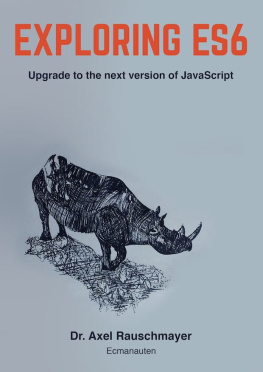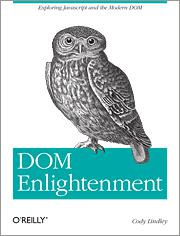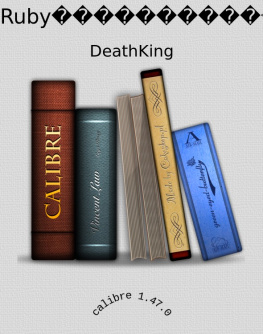it-ebooks - Git Reference
Here you can read online it-ebooks - Git Reference full text of the book (entire story) in english for free. Download pdf and epub, get meaning, cover and reviews about this ebook. year: 2016, publisher: iBooker it-ebooks, genre: Computer. Description of the work, (preface) as well as reviews are available. Best literature library LitArk.com created for fans of good reading and offers a wide selection of genres:
Romance novel
Science fiction
Adventure
Detective
Science
History
Home and family
Prose
Art
Politics
Computer
Non-fiction
Religion
Business
Children
Humor
Choose a favorite category and find really read worthwhile books. Enjoy immersion in the world of imagination, feel the emotions of the characters or learn something new for yourself, make an fascinating discovery.
Git Reference: summary, description and annotation
We offer to read an annotation, description, summary or preface (depends on what the author of the book "Git Reference" wrote himself). If you haven't found the necessary information about the book — write in the comments, we will try to find it.
Git Reference — read online for free the complete book (whole text) full work
Below is the text of the book, divided by pages. System saving the place of the last page read, allows you to conveniently read the book "Git Reference" online for free, without having to search again every time where you left off. Put a bookmark, and you can go to the page where you finished reading at any time.
Font size:
Interval:
Bookmark:
Quick reference guides: GitHub Cheat Sheet (PDF) | Visual Git Cheat Sheet (SVG | PNG)
git-diff - Show changes between commits, commit and working tree, etc
git diff [options] [] [--] []git diff [options] --cached [] [--] []git diff [options] [--] []git diff [options] git diff [options] [--no-index] [--]Show changes between the working tree and the index or a tree, changes between the index and a tree, changes between two trees, changes between two blob objects, or changes between two files on disk.
git diff [--options] [--] []
This form is to view the changes you made relative to the index (staging area for the next commit). In other words, the differences are what you could tell Git to further add to the index but you still havent. You can stage these changes by using .
git diff --no-index [--options] [--] []
This form is to compare the given two paths on the filesystem. You can omit the --no-index option when running the command in a working tree controlled by Git and at least one of the paths points outside the working tree, or when running the command outside a working tree controlled by Git.
git diff [--options] --cached [] [--] []
This form is to view the changes you staged for the next commit relative to the named . Typically you would want comparison with the latest commit, so if you do not give , it defaults to HEAD. If HEAD does not exist (e.g. unborn branches) and is not given, it shows all staged changes. --staged is a synonym of --cached.
git diff [--options] [--] []
This form is to view the changes you have in your working tree relative to the named . You can use HEAD to compare it with the latest commit, or a branch name to compare with the tip of a different branch.
git diff [--options] [--] []
This is to view the changes between two arbitrary .
git diff [--options] .. [--] []
This is synonymous to the previous form. If on one side is omitted, it will have the same effect as using HEAD instead.
git diff [--options] ... [--] []
This form is to view the changes on the branch containing and up to the second , starting at a common ancestor of both . "git diff A...B" is equivalent to "git diff $(git-merge-base A B) B". You can omit any one of , which has the same effect as using HEAD instead.
Just in case if you are doing something exotic, it should be noted that all of the in the above description, except in the last two forms that use ".." notations, can be any .
For a more complete list of ways to spell , see "SPECIFYING REVISIONS" section in .
git diff [options]
This form is to view the differences between the raw contents of two blob objects.
-p
-u
--patch
Generate patch (see section on generating patches). This is the default.
-s
--no-patch
Suppress diff output. Useful for commands like git show that show the patch by default, or to cancel the effect of --patch.
-U
--unified=
Generate diffs with lines of context instead of the usual three. Implies -p.
--raw
Generate the diff in raw format.
--patch-with-raw
Synonym for -p --raw.
--minimal
Spend extra time to make sure the smallest possible diff is produced.
--patience
Generate a diff using the "patience diff" algorithm.
--histogram
Generate a diff using the "histogram diff" algorithm.
--diff-algorithm={patience|minimal|histogram|myers}
Choose a diff algorithm. The variants are as follows:
default, myers
The basic greedy diff algorithm. Currently, this is the default.
minimal
Spend extra time to make sure the smallest possible diff is produced.
patience
Use "patience diff" algorithm when generating patches.
histogram
This algorithm extends the patience algorithm to "support low-occurrence common elements".
For instance, if you configured diff.algorithm variable to a non-default value and want to use the default one, then you have to use --diff-algorithm=default option.
--stat[=[,[,]]]
Generate a diffstat. By default, as much space as necessary will be used for the filename part, and the rest for the graph part. Maximum width defaults to terminal width, or 80 columns if not connected to a terminal, and can be overridden by . The width of the filename part can be limited by giving another width after a comma. The width of the graph part can be limited by using --stat-graph-width= (affects all commands generating a stat graph) or by setting diff.statGraphWidth= (does not affect git format-patch). By giving a third parameter , you can limit the output to the first lines, followed by ... if there are more.
These parameters can also be set individually with --stat-width=, --stat-name-width= and --stat-count=.
--numstat
Similar to --stat, but shows number of added and deleted lines in decimal notation and pathname without abbreviation, to make it more machine friendly. For binary files, outputs two - instead of saying 0 0.
--shortstat
Output only the last line of the --stat format containing total number of modified files, as well as number of added and deleted lines.
--dirstat[=]
Output the distribution of relative amount of changes for each sub-directory. The behavior of --dirstat can be customized by passing it a comma separated list of parameters. The defaults are controlled by the diff.dirstat configuration variable (see ). The following parameters are available:
changes
Compute the dirstat numbers by counting the lines that have been removed from the source, or added to the destination. This ignores the amount of pure code movements within a file. In other words, rearranging lines in a file is not counted as much as other changes. This is the default behavior when no parameter is given.
lines
Compute the dirstat numbers by doing the regular line-based diff analysis, and summing the removed/added line counts. (For binary files, count 64-byte chunks instead, since binary files have no natural concept of lines). This is a more expensive --dirstat behavior than the changes behavior, but it does count rearranged lines within a file as much as other changes. The resulting output is consistent with what you get from the other --*stat options.
files
Compute the dirstat numbers by counting the number of files changed. Each changed file counts equally in the dirstat analysis. This is the computationally cheapest --dirstat behavior, since it does not have to look at the file contents at all.
Font size:
Interval:
Bookmark:
Similar books «Git Reference»
Look at similar books to Git Reference. We have selected literature similar in name and meaning in the hope of providing readers with more options to find new, interesting, not yet read works.
Discussion, reviews of the book Git Reference and just readers' own opinions. Leave your comments, write what you think about the work, its meaning or the main characters. Specify what exactly you liked and what you didn't like, and why you think so.

















